Major X1.1 solar flare erupts from AR 3217
An impulsive solar flare measuring X1.1 erupted from Region 3217 at 15:48 UTC on February 11, 2023. The event started at 15:40 and ended at 15:54 UTC.
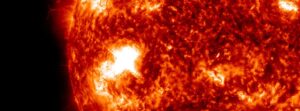
An impulsive solar flare measuring X1.1 erupted from Region 3217 at 15:48 UTC on February 11, 2023. The event started at 15:40 and ended at 15:54 UTC.
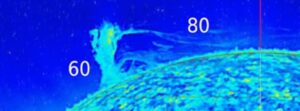
Our Sun went viral this week with a stunning polar vortex that revealed some of its mysterious dynamics in the one final region still uncharted by solar telescopes, that is until Solar Orbiter begins to climb to higher latitudes later in its mission.
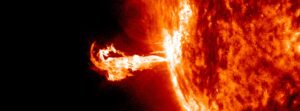
Our sun displayed high levels of activity in 24 hours to 12:30 UTC on February 9, including multiple low-level M-class solar flares and coronal mass ejections (CMEs) observed on the southeast and southwest limbs.
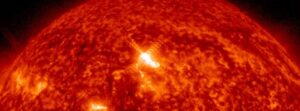
Active Region 3213 rapidly emerged on the visible disk on February 6 as just a few sunspots but has since grown into a mature, magnetically-complex sunspot group, producing several M-class flares, including a double-peaked flare that began at 22:46 and peaked at 23:07 as M6.3. The first peak was registered as M3.8 at 22:58 UTC.

Solar activity has reached moderate levels in 24 hours to 12:30 UTC on January 25, with a long-duration M4.6 flare peaking at 10:11 UTC today.

The period of January 9 to 15, 2023, was marked by intense solar activity, with numerous M and X-class flares being observed. The largest event of the period was an X1.9 flare on January 9, followed by an X1.0 on January 10. There were a total of 2 X-flares and 25 M-flares during the period but only two Earth-directed CMEs were observed from this flurry of activity.

Solar activity reached high levels in the past 24 hours, with the strongest event being an M6.0 flare from Region 3191. This event was accompanied by a Type II radio sweep and a Coronal Mass Ejection (CME) signature, however, analysis and modeling indicate that no Earth-directed component was produced. A CME was also observed off the southwest limb at 22:00 UTC on January 14, with analysis and modeling suggesting the possibility of a glancing blow on January 19.
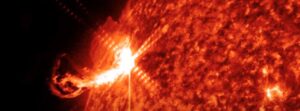
Solar activity is expected to remain moderate through January 13, with the continuing likelihood of M-class flares (70%) and a chance of X-class events (30%) due primarily to the combined flare probabilities of Regions 3181, 3182, 3184, and 3186.
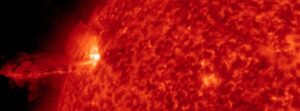
A major solar flare measuring X1.0 erupted from the newly-numbered Active Region 3186 on January 10, 2023. The event started at 22:39 UTC, peaked at 22:47 and ended at 22:52 UTC.
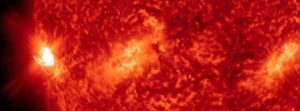
A major solar flare measuring X1.9 erupted from the newly-numbered Active Region 3184 on January 9, 2023. The event started at 18:37, peaked at 18:50, and ended at 18:57 UTC.